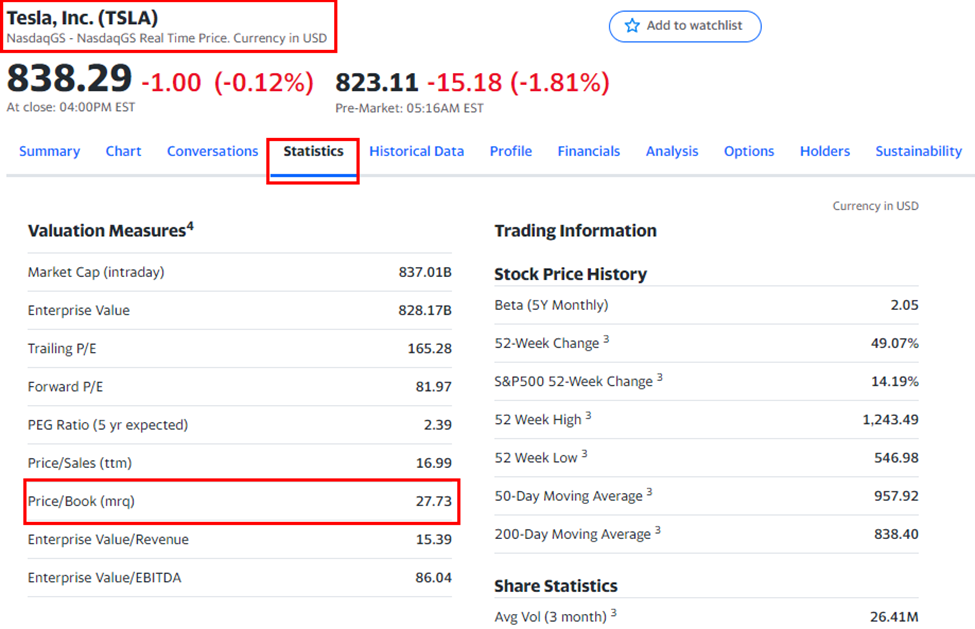We have already covered the Price-to-Book ratio in the past. It is one of the many financial ratios that investors need when evaluating a company. In this article, we will discuss this ratio with the help of concrete examples. An online calculator is presented at the end of this post.
What is the Price/Book Ratio?
The price/book ratio measures the market price of a company's stock to its book value. You can get the former through the stock exchange or several websites. Similarly, the book value comes from a company's financial statements.
The price/book ratio can help you evaluate a company. It tells you the value of that company based on how market participants perceive it. Similarly, it compares the value of a company's net assets from two views. The first is from the market where the company trades its stocks. The second comes from an internal valuation.
Why do we use the Price/Book Ratio?
Essentially, the price/book ratio can help you determine a company’s value based on market views. With this ratio, you can find undervalued companies for investment. On the other hand, you can also avoid overvalued companies.
The price/book ratio can also help you understand how the market values a company. Companies attach value to their assets in their financial statements. However, the market's perception is crucial in evaluating a particular stock.
How to use the Price/Book Ratio?
Using the price/book ratio requires selecting several companies for analysis. Unlike some other ratios, this ratio can provide valuable information on its own. The rules to use it are straightforward. Furthermore, you can also use it comparatively between several options.
Once you obtain those items, you can use them in the following price/book ratio formula.
Price/Book Ratio = Market Capitalization / Total Book Value
Investors prefer the price/book ratio to be lower than 1. In that case, it shows the company is undervalued. However, if it is higher than 1, it indicates an overvalued company. Nonetheless, you must consider everything carefully. In some cases, high and low ratios can have other implications.
Where to use the Price/Book ratio?
The price/book ratio is helpful when evaluating various companies. As stated above, it helps you identify overvalued and undervalued companies. For the former cases, you must avoid companies with a price/book ratio of higher than 1. The opposite applies to undervalued companies.
You can also use the price/book ratio comparatively. Sometimes, you will come across various investments with similar figures. This ratio can help you select the company with the best value. However, be wary of outliers in the market.
Example
You can calculate the price/book ratio yourself or get it from other sources. One of the best tools for this purpose is Yahoo Finance. Essentially, it provides the price/book ratio for companies for the most recent quarter.
For example, if you want to know the price/book ratio for Tesla, you can search it on the platform. Once you find it, you can see its price/book ratio under the "Statistics" tab. This ratio appears under the "Valuation Measures" section.
At the time of this article, Tesla’s price/book ratio is as below.

Conclusion
The price/book ratio gauges the market price of a company's stock and its book value. This ratio can help you identify companies that are undervalued or overvalued. Similarly, you can use it to compare various companies.
CALCULATOR
Use the dropdown menu highlighted in yellow to choose the stock.
Check out other finance calculators on our website.
Let us know what calculator you want us to develop in the comment section below.
Originally Published Here: Price to Book (P/B) Ratio: Calculator, Example

No comments:
Post a Comment